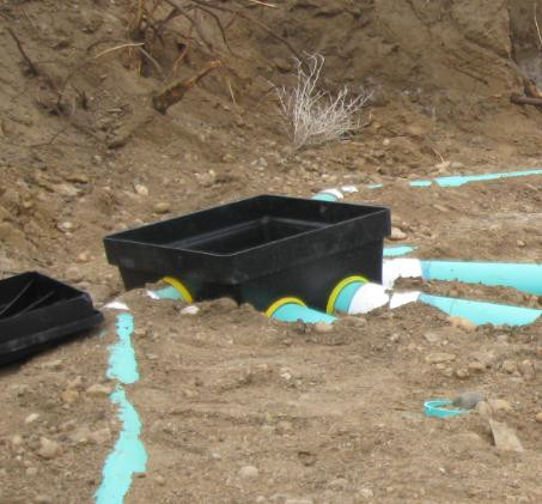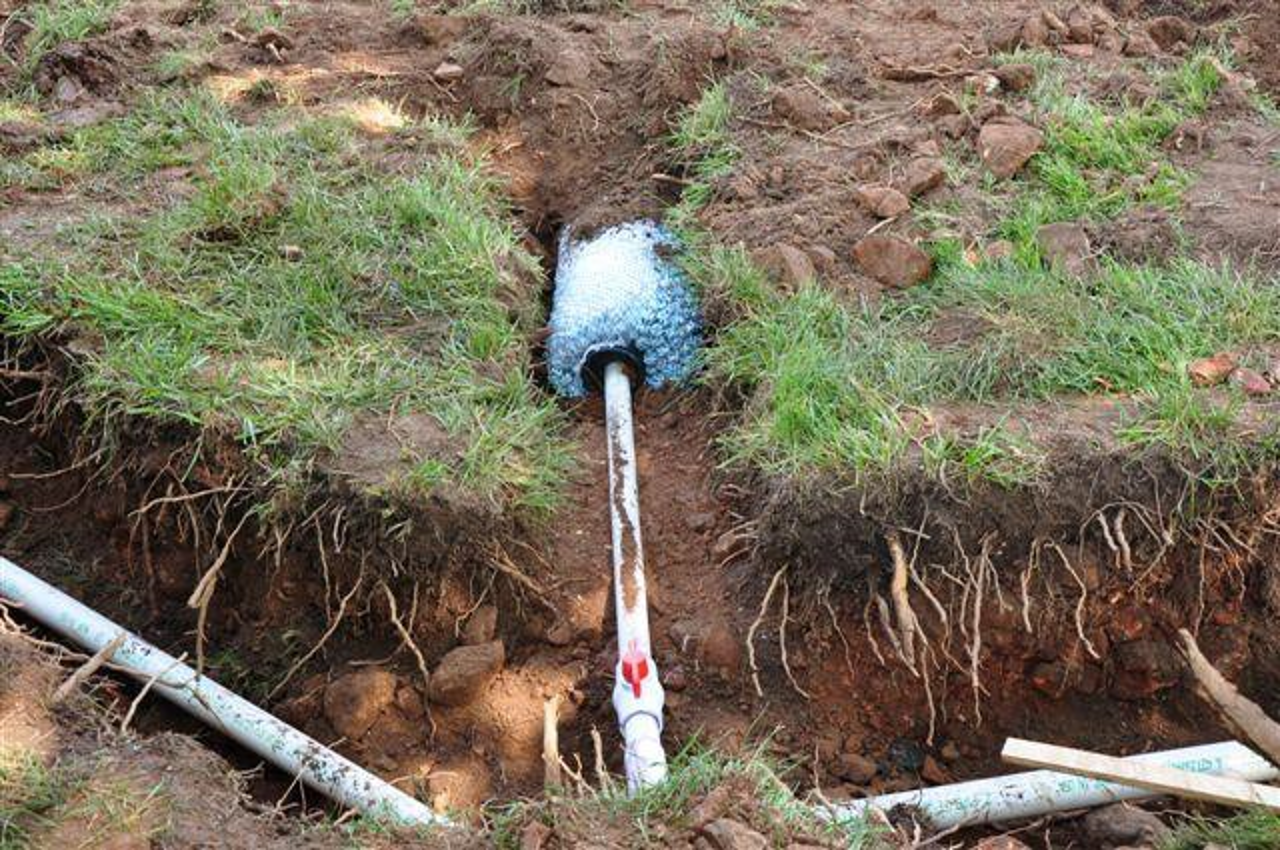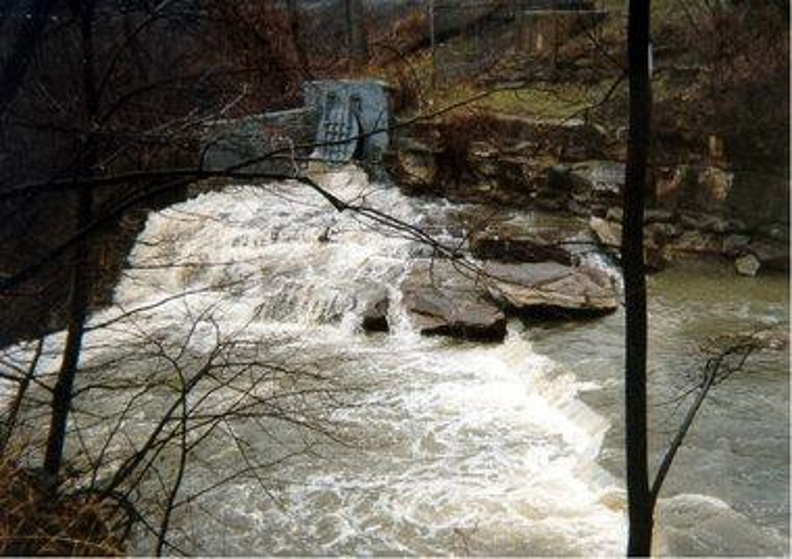The Top Ten Septic System Myths
Posted on by Dennis Hallahan
We have all heard them. Is Biomat bad? Does a distribution box or header manifold provide equal distribution? Earlier this week I presented a webinar that scientifically explained common myths surrounding septic systems. As an industry, it’s important to deliver consistent science-based message surrounding these myths that haunt many of us. Let’s review those common myths of the onsite wastewater industry.
Myth: A distribution pipe provides equal distribution.
False
Several studies have concluded that a perforated distribution pipe does not provide “equal distribution” within gravity-fed onsite wastewater treatment systems. However, under gravity flow a biomat will develop and provide equal distribution or pressure dosing is a mechanical method to achieve equal distribution.
 Myth: A distribution box or header manifold provides equal distribution.
Myth: A distribution box or header manifold provides equal distribution.
False
While distribution boxes or manifolds are installed level, they do however settle over time due to normal environmental factors. The settlement combined with low flow (gravity flow out of the septic tank is just a trickle, and the 4” pipe is large compared to the flow). Therefore, the flow discharging out will seek the lowest invert and not provide equal distribution.
Myth: Biomat is bad.
False
All systems will eventually develop a biomat. The biomat will help to provide equal distribution and better treatment of the onsite wastewater treatment system.
Myth: Venting a distribution trench provides better treatment and/or performance.
What do you think?
The process by which oxygen in gas gets transferred into liquid phase is very energy intensive, therefore little benefit is recognized. However, venting can be beneficial on a case by case basis because it provides oxygen it can only help, but there’s no scientific data to define just how much venting a system can help provide better treatment.
Myth: Design Flow = Actual Flow
False
Design flow always incorporates a factor of safety above what the actual flow of the system will be.
 Myth: Roots are bad for the drainfield.
Myth: Roots are bad for the drainfield.
Partially true, mostly false.
Roots can potentially help remove water and nutrients from a system. Roots can be a problem if they interfere with the pipe from the house to the septic tank because that pipe carries solids. But beyond the septic tank root intrusion into a drainfield isn’t always bad. Roots shouldn’t be encouraged, but they’re not awful.
Myth: All septic systems fail.
False
It’s important to factor in the design life of an onsite wastewater treatment system. The majority of people will say a septic system will last 20 years; a septic system requiring replacement before the end of a design life would be considered a failure. All products such as tires, roof shingles, bridges, etc., have a design life. Replacing a system after it has provided long years of service should not be confused with failures.
Myth: Stone within the drainfield provides treatment.
False
There have been studies of treatment levels of drainfields installed within and without stone. The results did not show any difference in treatment. This is because the soil is responsible for treating wastewater in an onsite wastewater treatment system.
Myth: “The best system is…” Can such a statement be made?
False
There is no one best onsite wastewater treatment system, each site is different, codes are different, installation difficulty varies, required O & M, etc. The best system is the one that will meet the stated goal (comply with health codes) for the lowest price.
 Myth: Sanitary sewers pollute less than decentralized systems.
Myth: Sanitary sewers pollute less than decentralized systems.
False
Sanitary sewers are provided CSO permits, this is a special permit to discharge raw wastewater in overflow events like a heavy rain event. Onsite wastewater treatment systems pass all wastewater through treatment.
These are just some of the most common myths I’ve encountered over my years in this industry. Have you heard other myths? Send me an email, I’d love to hear about them! As I mentioned earlier, the webinar I delivered presents more in-depth details for each of these myths. You can watch the webinar here.
About the Author:
 Dennis Hallahan, P.E.
Dennis Hallahan, P.E.
Technical Director
Dennis F. Hallahan, P.E., is the Technical Director of Infiltrator Water Technologies. Dennis has over twenty-eight years of experience with the design and construction of on-site wastewater treatment systems. He has authored several articles for on-site industry magazines and has given numerous presentations nationally on the science and fundamentals of on-site wastewater treatment systems. Dennis also oversees a department that is responsible for product research and testing for both Universities and private consultants. The department develops system sizing charts for national and international approvals and assists customers and field representatives in the planning and review of large decentralized systems. He received his MS in civil engineering from the University of Connecticut and his BS in civil engineering from the University of Vermont. Dennis is a registered professional engineer in Connecticut. He has been with Infiltrator for over 16 years and in his current position as Technical Director, he is responsible for the technology transfer between Infiltrator and the regulatory and design communities. Dennis also holds several patents for on-site wastewater products. Member ASCE, WEF, serves on the NOWRA Technical Practice and Educational Committees, also on the New England Water Environment Federation’s Small Community Committee.
Contact us if you have any questions about this blog post.
